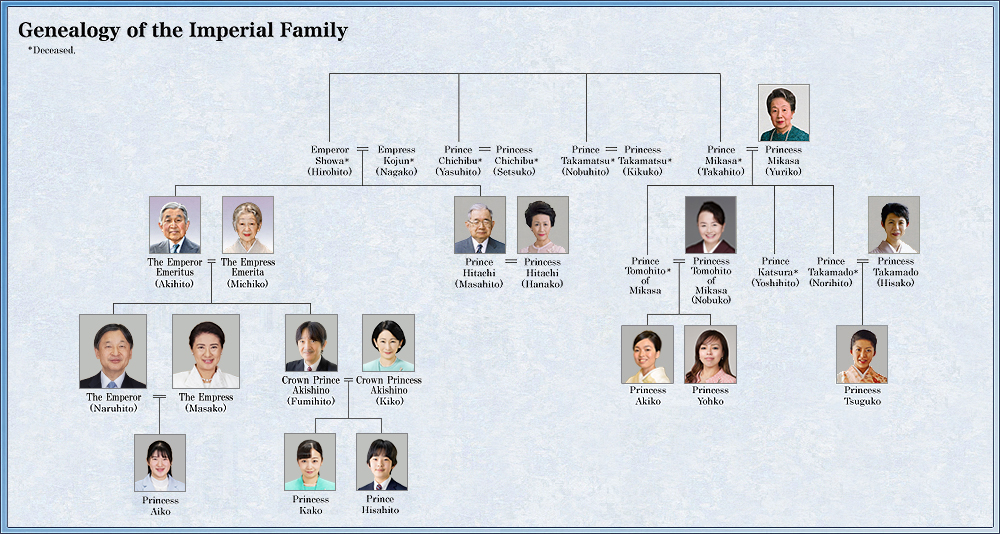|
ЕЊke
The , also known as the ''Old Imperial Family'' (旧皇族), were branches of the Japanese Imperial Family created from branches of the Fushimi-no-miya house, the last surviving Shinnōke cadet branch. All but one of these ''ōke'' (王家) were formed by the descendants of Prince Fushimi Kuniye. The ōke were stripped of their membership in the Imperial Family by the American Occupation Authorities in October 1947, as part of the abolition of collateral imperial houses. After that point, only the immediate family of Hirohito and those of his three brothers retained membership in the Imperial Family. However, unofficial heads of these collateral families still exist for most and are listed herein. In recent years, conservatives have proposed to reinstate several of the former imperial branches or else to allow the imperial family to adopt male members of the former princely houses, as a solution to the Japanese succession controversy. List of ōke The ''kyū-miyake'' were, ... [...More Info...] [...Related Items...] OR: [Wikipedia] [Google] [Baidu] |
Imperial Household Of Japan
The , also referred to as the Imperial Family or the House of Yamato, comprises those members of the extended family of the reigning Emperor of Japan who undertake official and public duties. Under the present Constitution of Japan, the Emperor is "the symbol of the State and of the unity of the people". Other members of the Imperial Family perform ceremonial and social duties, but have no role in the affairs of government. The duties as an Emperor are passed down the line to their male children. This Japanese monarchy is the oldest continuous hereditary monarchy in the world. The Imperial House recognizes 126 monarchs, beginning with Emperor Jimmu (traditionally dated to 11 February 660 BC), and continuing up to the current emperor, Naruhito. However, scholars have agreed that there is no evidence of Jimmu's existence, that the traditional narrative of Japan’s founding is mythical, and that Jimmu is a mythical figure. Historical evidence for the first 25 emperors is mythical, ... [...More Info...] [...Related Items...] OR: [Wikipedia] [Google] [Baidu] |
Prince Fushimi Kuniye
was Japanese royalty. He was the 20th/23rd prince Fushimi-no-miya and the eldest son of Prince Fushimi Sadayuki (1776–1841) and his concubine Seiko, which made him an 11th cousin of Emperor Sakuramachi. Despite being merely a distant cousin to the emperors, he was adopted by Emperor Kōkaku as a Yūshi in 1817, which made him a Shinnō, or prince, just like an emperor's natural-born son. Prince Kuniie succeeded to the title of Fushimi-no-miya after the death of his father in 1841. But soon, in 1842, his eldest (natural) son, Zaihan (later Prince Yamashina Akira) ran away with his aunt Princess Takako, while Zaihan was a monk in Kajū-ji. Because of this scandal, the prince soon had to abdicate in favor of the only son of his wife, Prince Sadanori, who was the sixth out of 17 sons of his father. Prince Kuniie took the name Zengaku (禪樂) as a monk afterwards. In 1864, Kuniie succeeded as Prince Fushimi-no-miya again. After Emperor Meiji moved the capital of Japan to Tokyo, ... [...More Info...] [...Related Items...] OR: [Wikipedia] [Google] [Baidu] |

